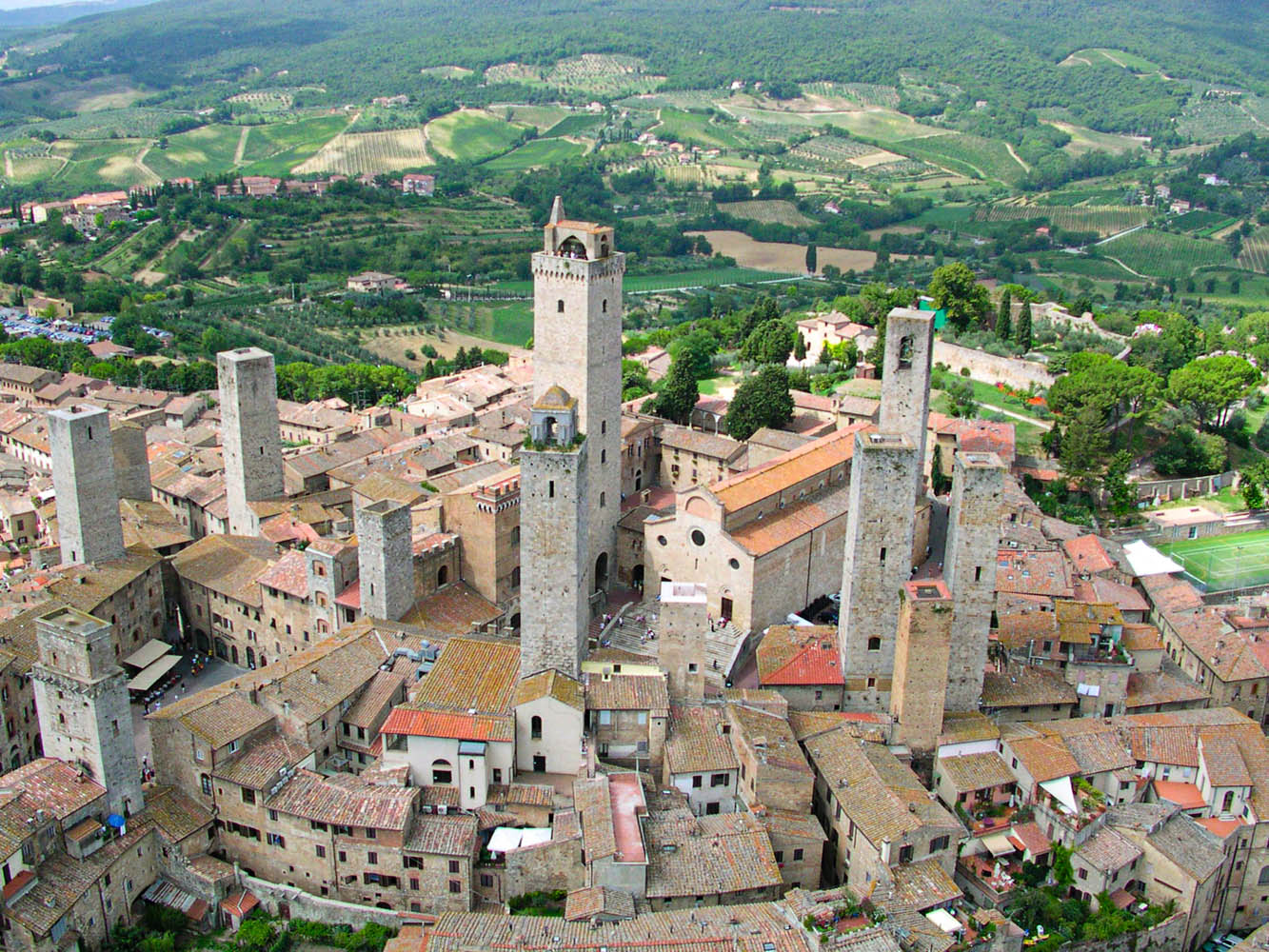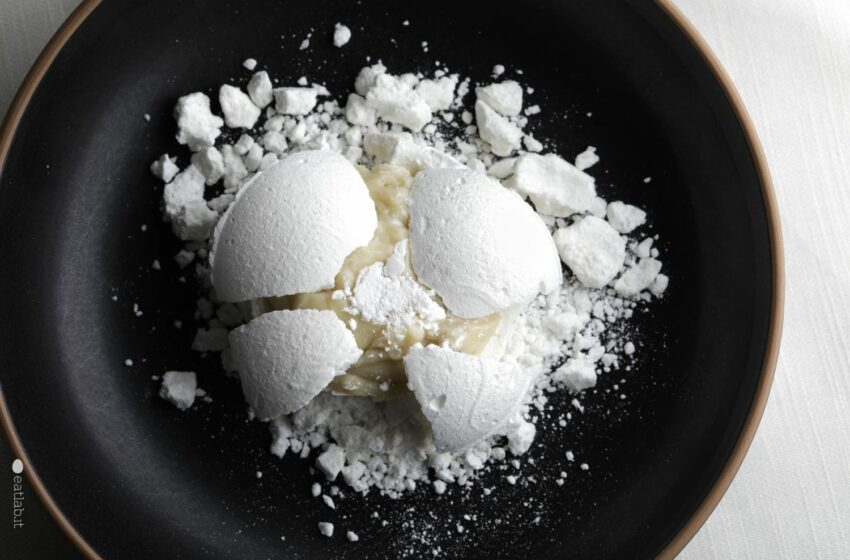
Offida cuisine and Longobard influence
Offida’s cuisine tells the story of ancient peasant traditions, probably dating back to the Lombard invasion that began in the 6th century AD, leaving countless traces not only in the city’s architecture but also in the local cuisine. These are simple dishes made with whatever the housewives could recover from the less noble cuts of meat, making the most of them to feed their families, and types of pasta made with flour and water instead of eggs, enriched with the imagination that abounded where raw materials were scarce. Original criteria for food recovery that could be the basis of today’s domestic economy, increasingly subject to price increases. Renowned chef Daniele Citeroni Maurizi from Offida proudly took up the ancient recipes, re-proposing them in a modern key without altering their original flavors, making only a few adjustments to eliminate anything redundant or indigestible, once justified by the need for greater caloric intake and the necessity to preserve food as long as possible.
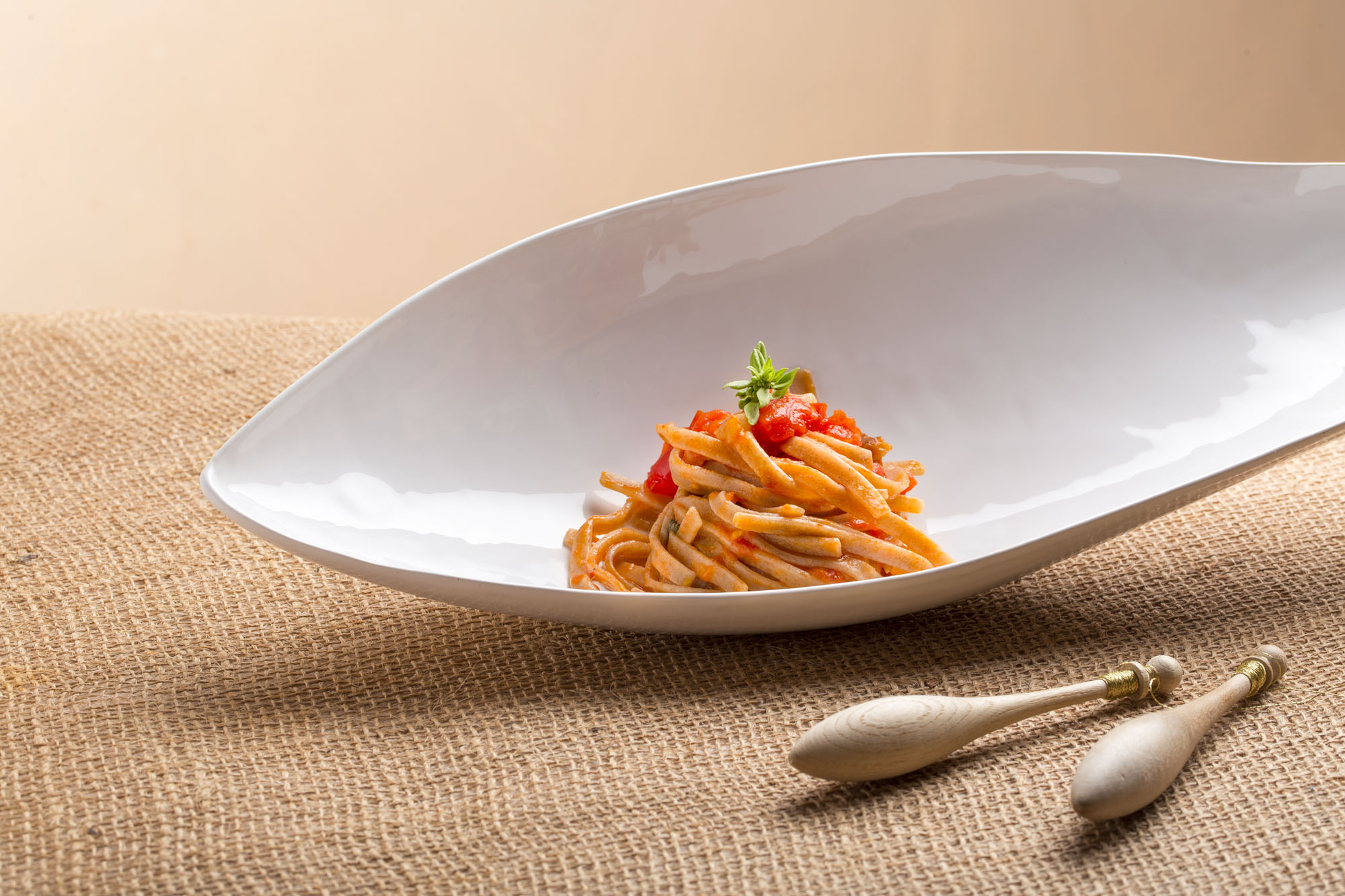
“Taccù,” large tagliolini made with water and flour (similar to pici and strangozzi), cooked in broth with a sauté of fat and lean meat, without oil, onions, little tomato, and bacon for those who could afford it, to be eaten with a spoon and fork. The use of animal fat could indeed date back to the Lombard era, a way to impart flavor to food when precious salt was scarce, a privilege of a few wealthier families. Taccù was served dry on Christmas Eve, seasoned with a tomato sauce based on blue fish: tuna, mackerel, anchovies, and herring, all preserved in oil or salt.
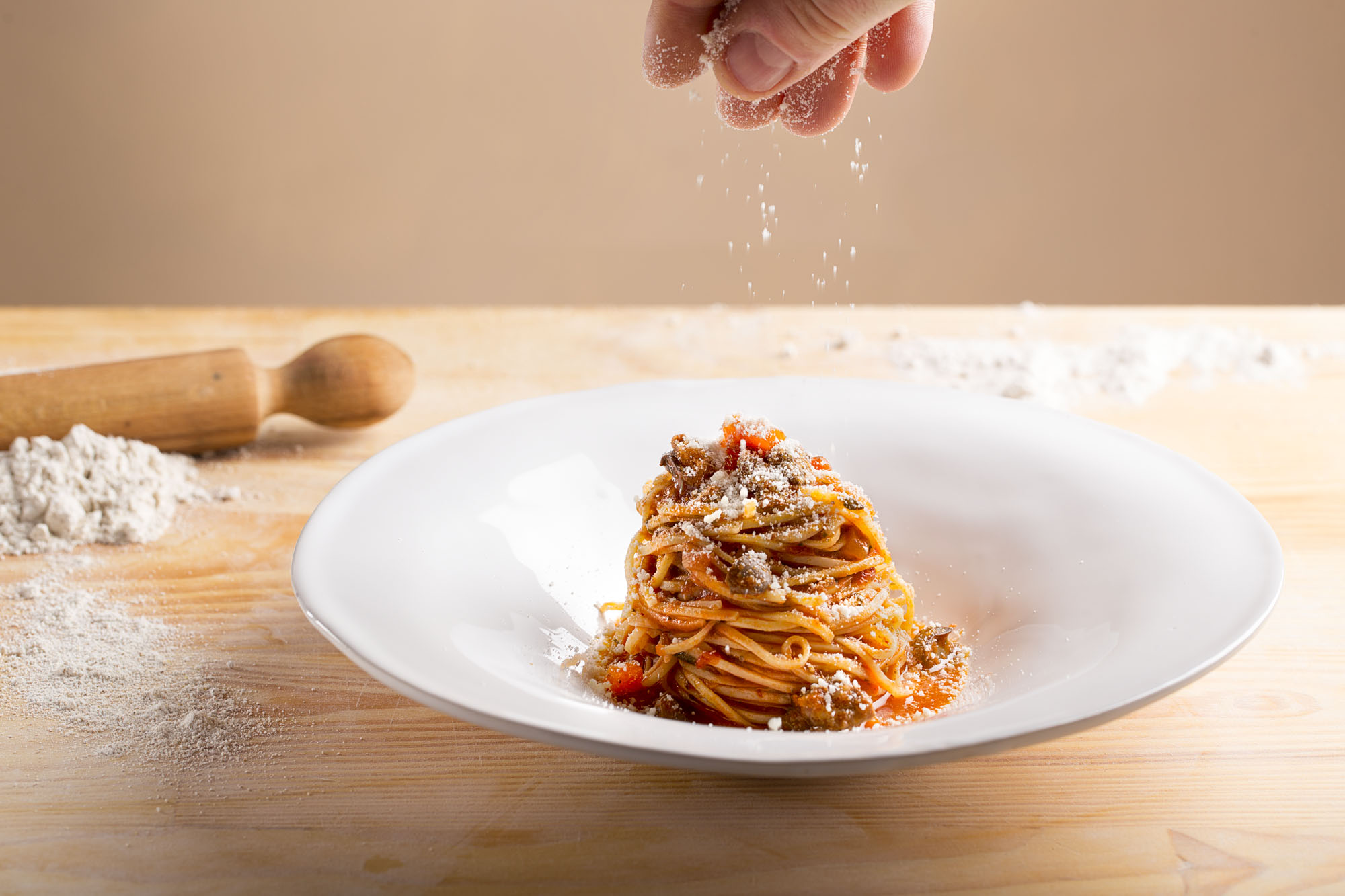
“Maccheroncini della trebbiatura” were the festive dish, indispensable in a convivial moment immediately after the wheat harvest. The pasta is made with flour and eggs, in the classic proportion of one hundred grams of flour per egg, with locally produced flour, not too refined; the seasoning consisted of a tomato sauce with the chicken’s offal: feet, gizzards, neck, giblets, nerves, in short, the fifth quarter of the chicken, with a small addition of veal or pork bones. Today you can deglaze the meat with dry white wine, but in ancient habits, this step was not provided. Tomato puree or peeled tomatoes were once replaced with water and preserves. The only ingredient available in abundance was time (unlike today), as the sauce required a minimum of four hours of boiling. The “maccheroncini,” a term used for dozens of different types of pasta in all Italian regions, were represented here by very thin tagliolini left to dry: angel hair.
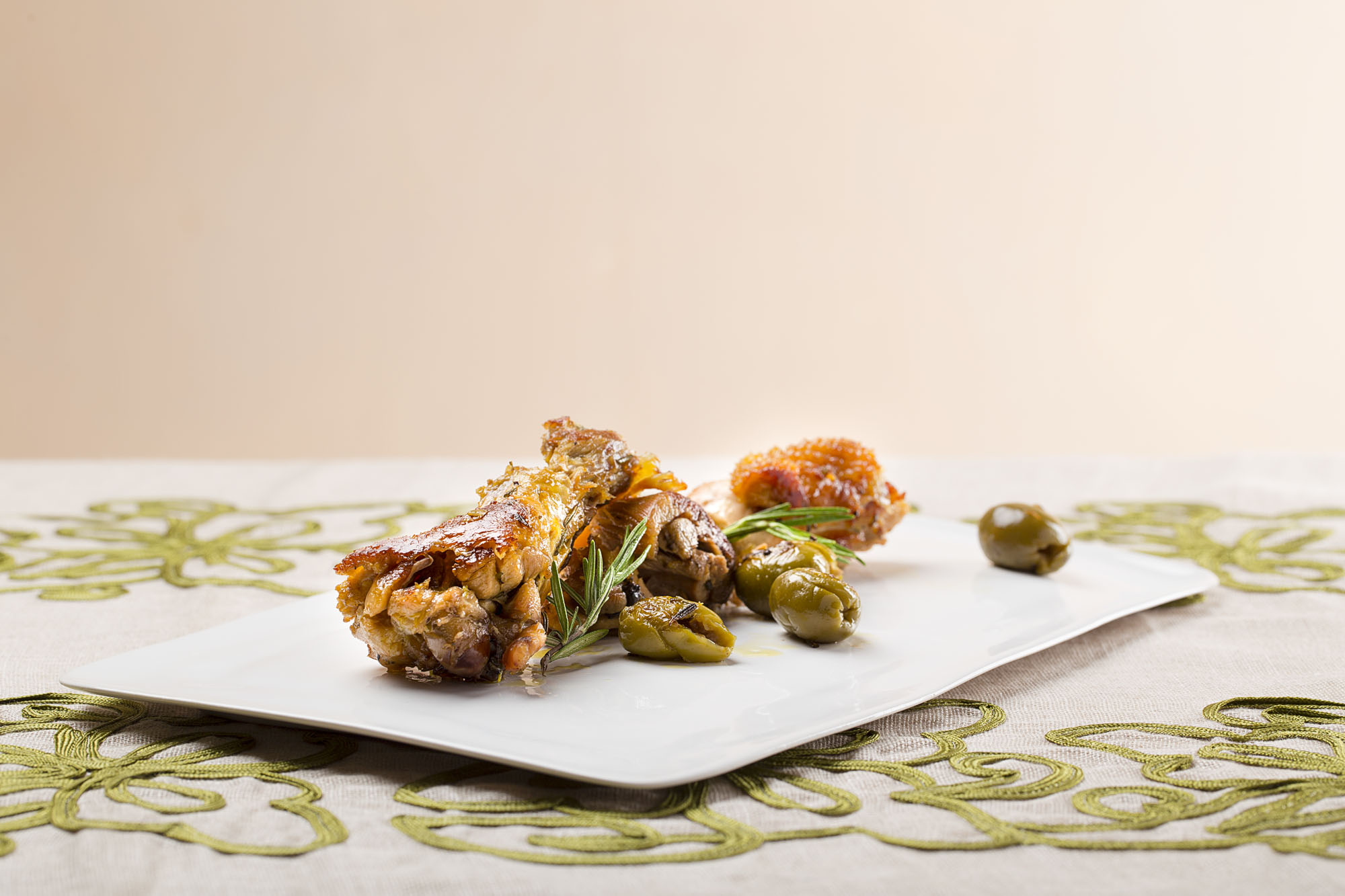
If the chicken “scraps” were used for the maccheroni sauce, the noble parts were used to make the “pollo ‘ncip ‘nciap,” another excellence of Offida gastronomy. It was made into a stew, deglazed with dry white wine in a pot with oil, garlic, rosemary, and olives of the tender ascolana DOP variety, the same ones used in the preparation of the famous ascolane olives. 45 minutes of cooking, at low temperature, with the lid on, stirring occasionally to achieve perfect browning.
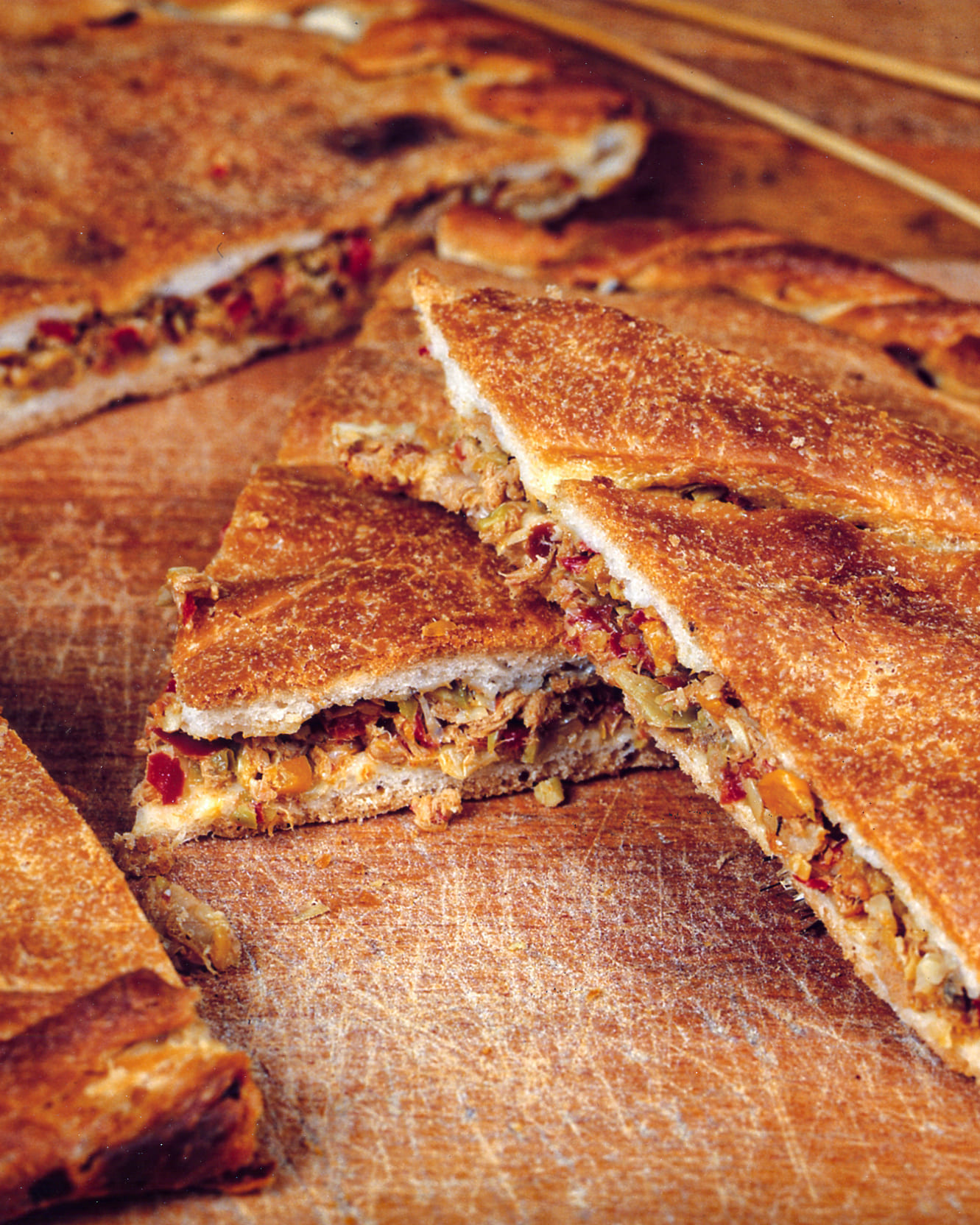
The quintessential product of the Borgo: “chichì,” a delicious and flavorful focaccia, filled with tuna, anchovies, capers, and peppers. A baked product that could be another reminiscence of Northern Europe, where bread was stuffed with preserved fish.
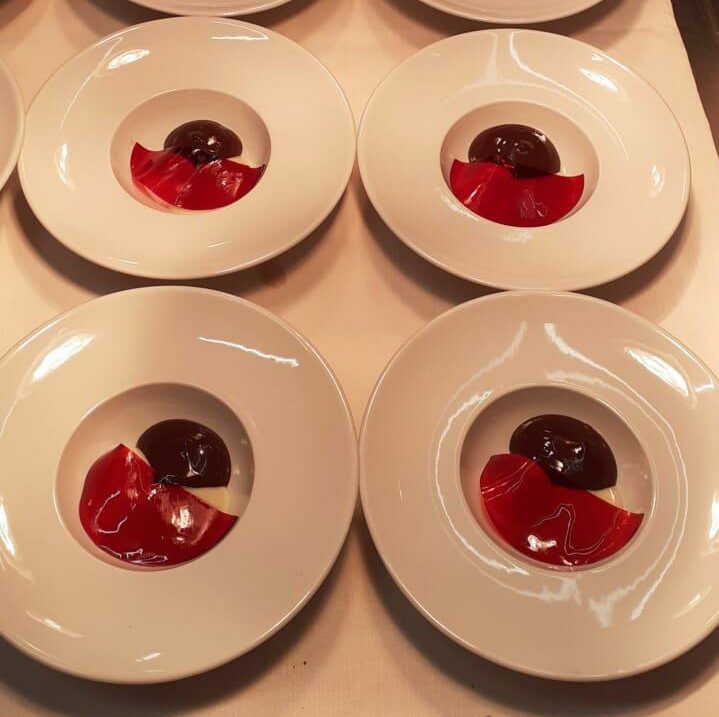
“Tre-sie-nov,” 3-6-9, a spoon dessert made with three tablespoons of cocoa, six of flour, and nine of sugar, a sort of English soup with three creams: cocoa; a white cream with flour and egg whites; a yellow one with flour and egg yolks. As a base, “pasta guelfa” was used, biscuits to soak made with ammonia instead of yeast or ladyfingers or sponge cake, also called “pizza sbattuta” by local grandmothers, soaked with Alchermes. Then the three creams were layered, in the case of a single dessert, now presented in an elegant single serving in a cup.

The Offida mushroom, one of the oldest and most appreciated desserts in the Marche region, an energizer used in times of pestilence because it contained no perishable ingredients: water, flour, honey instead of today’s sugar, and a liqueur based on green anise seeds, anisette. Balls were created and left to air dry, then briefly baked.
Credits foto: Umberto Capriotti , Idee di Marca, Daniele Citeroni
Leggi di più >> OFFIDA, trame della vita, dei sogni e del vivere lento.

Si occupa di cucina e di tradizioni, con un pensiero sempre sensibile verso le tematiche della sostenibilità sia ambientale che economica.
Leggi in:
![]() Italiano
Italiano






